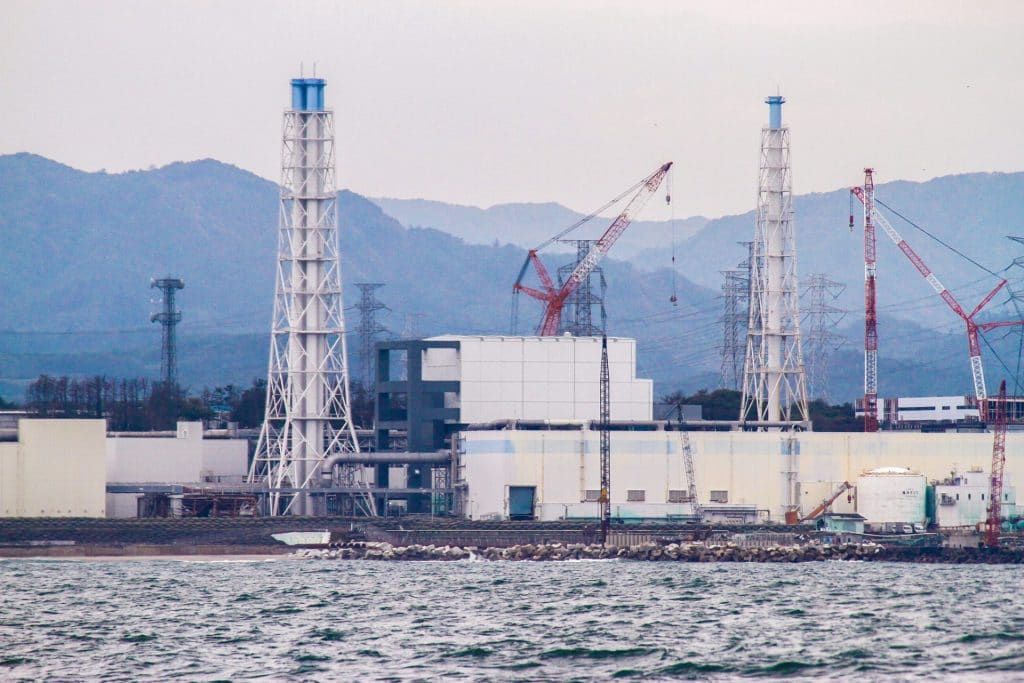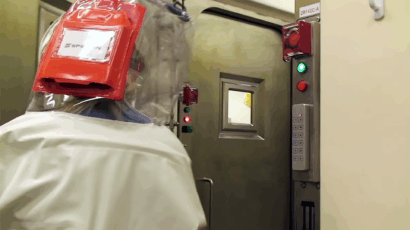Why Japan’s plan for Fukushima wastewater lacks public trust
By Tatsujiro Suzuki | May 13, 2021
 Fukushima Sea Water Sampling-3. The damaged Fukushima Daiichi Nuclear Power Station as seen during a sea-water sampling boat journey, 7 November 2013. IAEA marine monitoring experts were sent to Japan to observe sea water sampling and data analysis. Photo accessed by Flickr. CC BY-SA 2.0.
Fukushima Sea Water Sampling-3. The damaged Fukushima Daiichi Nuclear Power Station as seen during a sea-water sampling boat journey, 7 November 2013. IAEA marine monitoring experts were sent to Japan to observe sea water sampling and data analysis. Photo accessed by Flickr. CC BY-SA 2.0.
On April 13, the Japanese government announced it would release treated water at the Fukushima Daiichi nuclear power plant into the open sea. This decision has generated severe criticism and questions both inside and outside of Japan. What is treated water? Is it safe? Is there a bigger problem—beyond plans for the treated water? How should the government and the public proceed from here? The main problem is a lack of trust among stakeholders. Restoring public trust is vital.
What is treated water, and is it safe to release into the sea? At the Fukushima Daiichi nuclear power plant site, where a nuclear accident took place 10 years ago, melted fuel debris is still being cooled by circulating water. Even today, this process generates about 140 tons of contaminated water every day as underground water and rain flow into the reactor buildings. This contaminated water contains large amounts of radioactive material, including cesium, strontium, iodine, and other substances, which are removed by a purification process known as the Advanced Liquid Processing System. The Japanese government and the Tokyo Electric Power Company (TEPCO) say that this system removes most of the radioactive materials to below regulatory standards but that it cannot remove tritium, a radioactive form of hydrogen. The government plan is to dilute the water so that the concentration of tritium will be far below—only 2.5 percent of—the regulatory standard for tritium wastewater. (The concentration of tritium in the diluted water will not exceed 1,500 Becquerel per liter, whereas the regulatory standard is 60,000.) After treating the water, they plan to release it to the sea.
The government and the power company stress that they cannot delay, as storage capacity of treated water will run out by 2022. The International Atomic Energy Agency and the US government supported Japan’s decision, saying their methods for releasing the controlled tritium water into the sea are routinely used by other nuclear facilities around the world.
But the treated water is not the same as other tritium water routinely released to the sea. The treated water may contain other radioactive materials which could pose serious risks to both human health and the environment.
TEPCO and the Ministry of Economy, Trade, and Industry have acknowledged that more than 70 percent of the treated water at Fukushima contains 62 other nuclides that are higher than regulatory standards. Therefore, treated water may pose significant risks to the environment and public health and could damage Fukushima’s fishing and agricultural industry. The environmental, social, and economic impacts of releasing the treated water to the sea must be more carefully assessed.
The public lost trust in the government and the Tokyo Electric Power Company. Contaminated water at Fukushima’s plant has been a headache ever since the accident. It also became a political issue when then prime minister Abe assured the International Olympics Committee planning for the Tokyo games that the situation in Fukushima was “under control.” Although the power company is, in principle, responsible for decommissioning the plant, the government took responsibility of managing the contaminated water in 2013. Later, in 2015, the government and the power company promised that they would not decide upon a disposal method without consulting the local community. However, in 2018, the press reported that the power company had not revealed that the treated water included other radionuclides (a radioactive class of atoms) at higher concentrations than the regulatory standards. The public lost trust completely, which delayed the process for another two years.
In February 2020, members of the ministry’s subcommittee on treated water recommended two release options they deemed viable and realistic: vapor release and discharge into the sea. However, the local community opposed discharging the treated water into the sea out of concern for its potential negative impact on local fishing, which had just about returned to normal since the time of the disaster. According to a poll by the Asahi Shimbun newspaper, 53 percent of the Fukushima public opposed the release to the sea.
Perhaps even worse from a public perception point of view, on April 14, 2021, the Nuclear Regulation Authority told TEPCO that it would not be allowed to operate the Kashiwazaki-Kariwa nuclear power plant because of its breach of security protection rules. TEPCO had allowed an employee with a false identification card an illegal entry last November. The company also did not take appropriate measures when it found broken detection and monitoring equipment.
At this point, the public’s distrust in the government and the Tokyo Electric Power Company deepened.
Restoring trust is vital. While the government and the power company have already decided to release treated water into the ocean, their plan will take approximately two years to implement. Regardless, their plan is unlikely to proceed smoothly. The government and the power company have emphasized that they will compensate those in the fishing business who are negatively affected by the release of treated water. But compensation alone is insufficient. Unless public trust in the whole decommissioning process is restored, a similar problem will arise again.
What follows are recommended actions to help ensure that the process of releasing Fukushima’s treated water proceeds smoothly and instills confidence.
First, the Japanese government and the Tokyo Electric Power Company should reestablish a process in which they engage with key stakeholders, including members of the fishing industry, local citizens, environmental groups, scientists, and representatives from concerned countries. To date, the government has offered explanatory public hearings and occasional briefings to governments concerned about the impacts of releasing the treated water to the sea. Apparently, the process was not good enough to restore stakeholder trust. The government should consider appointing an independent expert to facilitate this engagement. Until such an engagement process is established, the government should not make any further decisions regarding the treated water.
Second, the government and the power company should explore alternatives to releasing the water to the sea. For example, they might build large tanks with capacity for longer storage periods, investigate tritium separation technologies, consider tritium solidification technologies, and more. While the ministry’s subcommittee found two options it deemed realistic, the subcommittee might continue assessing alternate options to help restore public confidence in the decision-making process.
Third, the government should establish an independent oversight organization to ensure not only that the whole process is transparent but that the risk is acceptable to the local and international communities. The International Atomic Energy Agency could offer tremendous help, and experts from concerned countries could join their expert groups to monitor the process.
It’s not too late for change. In the 10 years since the Fukushima Daiichi nuclear power plant accident, public trust in the government and the power company has suffered. As the decommissioning process will last at least another 30 years or more, the Japanese government should reconsider how it makes decisions about decommissioning and reconstruction. Public concern related to the government’s recent announcement that it will release treated water into the sea is the tip of iceberg. It is the responsibility of the Japanese government and nuclear industry to manage this process successfully on behalf of all citizens of Japan and the world. The accident is not over yet.
Together, we make the world safer.
The Bulletin elevates expert voices above the noise. But as an independent nonprofit organization, our operations depend on the support of readers like you. Help us continue to deliver quality journalism that holds leaders accountable. Your support of our work at any level is important. In return, we promise our coverage will be understandable, influential, vigilant, solution-oriented, and fair-minded. Together we can make a difference.
















The Former Soviet Union used to discharge radioactive wastes, dismantled naval reactor components, and de-commissioned nuclear icebreakers into the Sea of Okhotsk and the Bering Sea. It also used barges sailing into other areas discharging radioactive wastes and materials. It is ashamed that no country had complained about its actions.
I’ve read that a whole generation of obsolete oil tankers (used to be considered large, now considered small) are being scrapped. Why not buy those up, fill their holds with Fukushima water, and scuttle them in the deep mid-Pacific? Give the isotopes more years to decay before they breach or leak.
It would probably violate our non=aggression pact with some deep sea horrors, I guess.